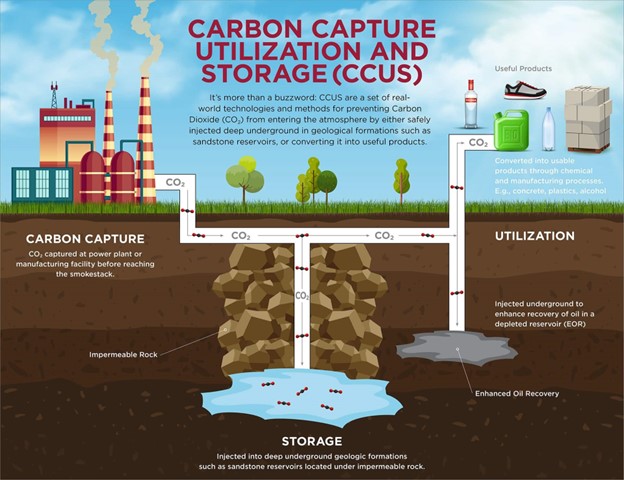
Image Source: Google
As the world continues to grapple with the effects of climate change, the need for sustainable solutions to reduce carbon emissions has never been more urgent. One promising avenue for combating climate change is through carbon capture technologies, which have the potential to play a pivotal role in the fight against global warming. The Green Revolution is upon us, and exploring carbon capture solutions is crucial for ensuring a sustainable future for generations to come.
Carbon capture and storage (CCS) is a process that involves capturing carbon dioxide emissions from sources like power plants and industrial facilities before they are released into the atmosphere. The captured CO2 is then transported and stored underground in geological formations, where it is permanently sequestered. This technology has the potential to significantly reduce greenhouse gas emissions and help mitigate the impacts of climate change. Refer: https://svanteinc.com/carbon-capture-solutions/.
One of the key benefits of carbon capture solutions is their ability to capture CO2 emissions from existing infrastructure, such as coal-fired power plants, which are major sources of carbon pollution. By retrofitting these facilities with carbon capture technology, we can significantly reduce their environmental impact and transition to a more sustainable energy system. Additionally, CCS can also be used in conjunction with bioenergy production, where CO2 emissions from biomass combustion are captured and stored, resulting in a carbon-negative process.
Another promising carbon capture technology is direct air capture (DAC), which involves capturing CO2 directly from the atmosphere using specialized chemical processes. This technology has the potential to remove large amounts of CO2 from the atmosphere and is particularly useful for reducing emissions from sectors where traditional CCS technologies are not feasible, such as transportation and agriculture. DAC can also be coupled with carbon utilization technologies, where captured CO2 is used to produce fuels, chemicals, and building materials, creating a closed-loop system that helps reduce overall emissions.
Research and development in carbon capture technologies are crucial for advancing these solutions and making them cost-effective and scalable. Governments, industries, and research institutions around the world are investing in CCS research to drive innovation and deployment of these technologies on a larger scale. Initiatives like the Carbon Capture Coalition in the United States bring together stakeholders from various sectors to advocate for policies that support the development of carbon capture solutions and accelerate their deployment.
Despite the potential of carbon capture technologies, there are still challenges that need to be addressed to achieve widespread adoption. One of the main barriers is the high cost of implementing carbon capture systems, which can make them economically unfeasible without financial incentives or policies that put a price on carbon emissions. Continued research and development are essential for driving down costs and improving the efficiency of these technologies to make them competitive with other forms of energy production.
Another challenge is the need for adequate infrastructure to support the transport and storage of captured CO2. Developing pipelines and storage sites for CO2 sequestration requires significant investments and regulatory approvals, which can be barriers to the widespread deployment of carbon capture technologies. Collaboration between governments, industries, and communities is essential for building the necessary infrastructure and addressing concerns around safety and environmental impacts.
As we continue to explore carbon capture solutions for a sustainable future, it is clear that a multi-faceted approach is needed to address the complex challenges of climate change. In addition to carbon capture technologies, we must also invest in renewable energy sources, energy efficiency measures, and sustainable land use practices to reduce greenhouse gas emissions and transition to a low-carbon economy. Collaboration and innovation will be key to unlocking the full potential of carbon capture technologies and achieving a more sustainable future for all.
The Green Revolution is not just a buzzword; it is a call to action for individuals, businesses, and governments to come together and embrace sustainable solutions to combat climate change. By exploring carbon capture technologies and investing in a clean energy future, we can build a more resilient and environmentally conscious world for future generations. The time to act is now, and the future of our planet depends on the decisions we make today.
